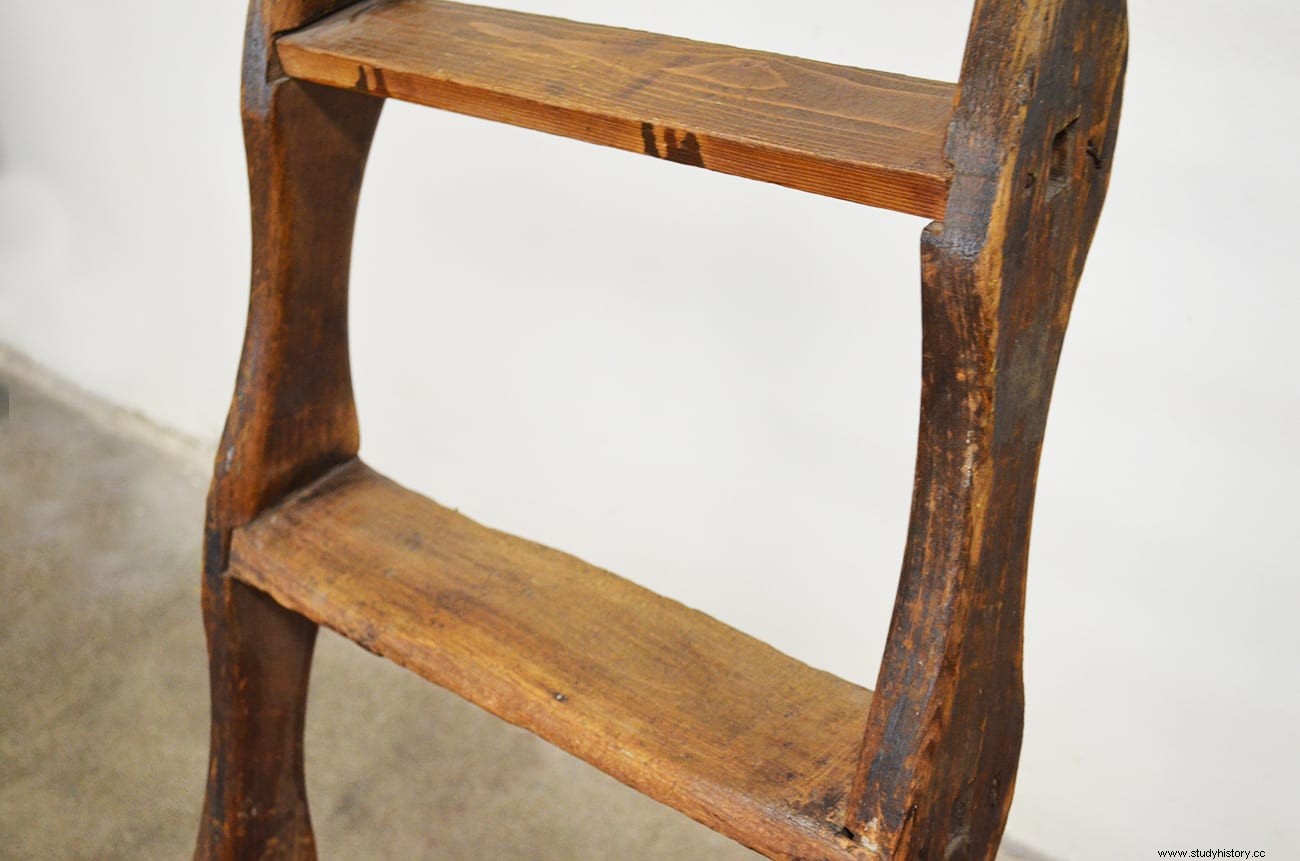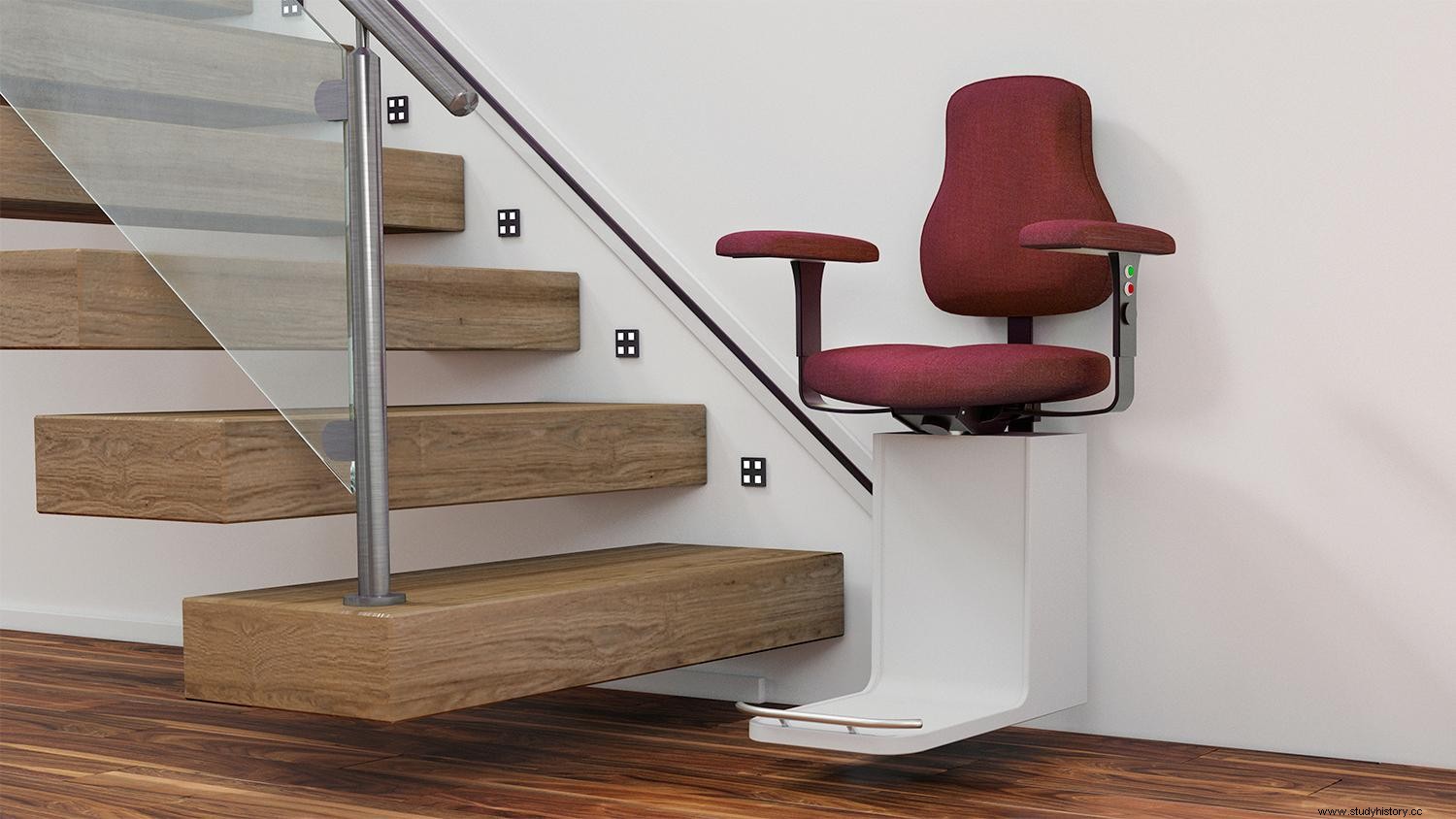
History of the staircase:wooden ladder
The history of the staircase is very interesting:you can find it below.
History of the staircase:the origins
The staircase it is certainly the oldest building in the history of architecture .
The estimate of the first appearance dates back to 6000 BC. approx.
The earliest recognized scales in history were probably those composed of a series of logs wedged together.
They were used for survival and to reach high places such as valleys or mountains .
Many years later it appeared in China the first staircase of granite .
This led to the sacred mountain Tai Shan .
From a religious point of view, the staircase had a figurative meaning as the connection between heaven and earth.
Later in the castles the first spiral staircases were born for military reasons .
With this type ti scale the soldiers were able to reach specific positions for defense .
Around the end of the 800 it was patented in the United States of America a type of ladder based on the principle of the conveyor belt.
The inventor was Jesse W. Reno and the invention in question is the escalator .
The ladder today
 This great invention is spread all over the world of course.
This great invention is spread all over the world of course.
In the current era, however, it is often replaced for convenience and above all laziness by elevators or escalators .
Today the ladder for a certain type of people can be considered a obstacle insurmountable.
For people with movement problems , going down or up a flight of stairs can become a serious and serious problem.
Not feeling autonomous and independent can cause severe mental illness of impotence.
The stairlift solution
The staircase is defined and cataloged as an architectural barrier .
By "architectural barriers" we mean all physical obstacles that do not allow complete mobility for all those who have a limited motor ability , temporary or permanent.
Other concrete examples are sidewalks without ramps and narrow doors.
To overcome this very current problem, the development and design of a mechanical system was developed:the stairlift .
It allows these people to move up a flight of stairs in full autonomy.
Going up to an upper floor or going down to a lower floor will no longer be a problem.
The installation of a stairlift for the disabled is especially advantageous because it is not necessary to request a municipal permit .
To start the work, it will be sufficient to send a communication to the municipal office to specify the demolition of the architectural barrier, as it does not appear to be a ' building work .
The rails on which the stairlift will slide are in fact simply anchored and fixed to the steps of the staircase by means of special metal bolts.
After installation, it is advisable to define the starting plan and end of the rails and any intermediate stops.
The nutrition of this system is supplied by the voltage of simple household electrical sockets equipped with grounding.
Types of stairlifts

Stairlift
Depending on the mode of transport, there are two types of stairlifts.
The platform stairlift it is recommended for all those who are equipped with a wheelchair or wheelchair.
The transport takes place by means of a mobile platform that will allow the person not to have to get out of their medical vehicle.
The armchair stairlift instead it is for all those who do not have these motor health means.
The transport takes place with the person comfortably seated on an armchair.
These stairlifts are called fixed as they are permanently installed on the flight of stairs.
On the other hand, there are mobile stairlifts .
These are transportable and equipped with wheels and tracks that allow use in any place.
History of the Scala:conclusions
The scale continues to evolve.
The stairlift is today the ideal solution for breaking down an architectural barrier such as a flight of stairs.
People with limited mobility will finally be able to face their lives in an independent way and autonomous , enjoying a very normal freedom of movement (Photo gives: thehouseofvintage.it, moversiliberi.it and juzaphoto.com).
